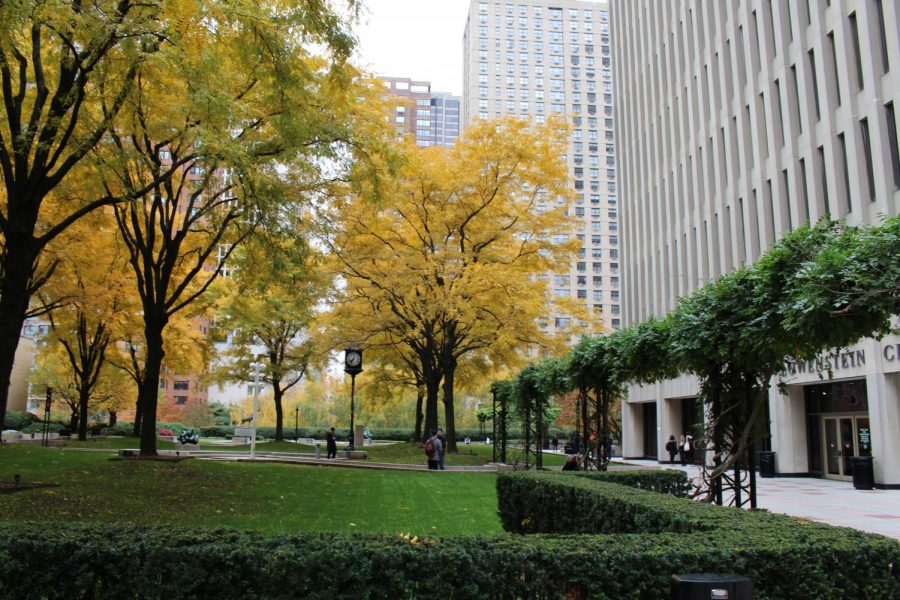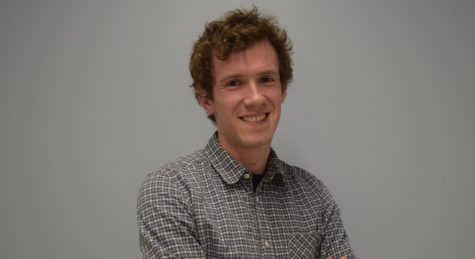Robert Moses, Friend of Fordham, Left a Complex Legacy
November 14, 2018
The name Robert Moses has countless connotations, mostly negative, for Fordham students: racism, gentrification and displacement, to name a few, all come to mind. Moses is intrinsically linked to the construction of Fordham Lincoln Center (FLC) and the surrounding Lincoln Square neighborhood. I can remember, however, that as a prospective student touring FLC for the first time, I had no knowledge of the controversial and at times ugly history of the neighborhood.
In his 2015 State of the City Address, New York City Mayor Bill de Blasio, speaking on the increasingly prevalent problems posed by gentrification across the city, commented that New York “is a place that in too many ways has become a tale of two cities, a place where City Hall has too often catered to the interests of the elite rather than the needs of everyday New Yorkers.”
De Blasio’s reference to Charles Dickens’ 1859 novel captures the nuances and contradictions of urban renewal projects like FLC or Lincoln Center. Whatever renewal happens as a result of such projects always comes at a cost; they represent, to quote Dickens, “everything” for some and “nothing” for others.
Gentrification too often leads to displacement and separation, and this phenomenon is evident on the two square blocks of the FLC campus. The Outdoor Plaza, while technically open to the public, sits elevated one story above street level, enclosed on virtually all sides by buildings, walls and fences. Walking through it, it is easy to feel strangely isolated from surrounding city life. It is closed altogether, both to Fordham students and the general public, overnight.
The campus also breaks West 61st Street in half between Columbus and Amsterdam Avenues. Along with Lincoln Center, Fordham glaringly disrupts the urban grid of the Upper West Side from 60th to 65th Streets.
Lincoln Center’s history is relatively well-known within the Fordham community. In the mid-20th century, Robert Moses, head of the Mayor’s Committee on Slum Clearance, was tasked with developing thousands of high-rise public housing units in which poor residents living in “slums” could be placed. The Lincoln Square renewal was a focal point of this project.
It is estimated that approximately 7,000 lower-class families were displaced out of what was then San Juan Hill to make way for Lincoln Center, but the true numbers remain unknown.
Robert Caro, in his famed biography of Moses, “The Power Broker,” described the incredibly coincidental circumstances out of which Lincoln Square was conceived. Rev. Laurence J. McGinley, S.J., who served as president of Fordham from 1949–1963, mentioned to Moses that the university desired a midtown campus but could not afford midtown real estate prices. The Metropolitan Opera was seeking to move from its “ancient” building on 39th Street. The New York Philharmonic had been notified by Carnegie Hall that its lease would not be renewed after 1958.
From these three coincidences, Caro wrote, Moses’ mind “lept to a grand conception: raving eighteen square blocks of slums … and rearing in their ruins a huge, glittering cultural center” that would house the university, opera and Philharmonic.
Caro described the scene at the FLC dedication ceremony on July 3, 1970, at which Moses, Fordham President Rev. Michael P. Walsh, S.J. and Mayor Nelson Rockefeller were present. It was at this ceremony that the now-infamous “Robert Moses, Masterbuilder, Friend of Fordham” plinth was unveiled — that text was chiseled into the marble of the plinth and gilded in gold.
When Walsh announced that the outdoor plaza would be named in Moses’ honor, Moses broke into tears.
Thirty-seven years after his death in 1981, neither Fordham nor New York City has fully stepped out of Moses’ shadow. Lincoln Square, for many urban and real estate developers, has long been viewed as a prototypical urban renewal project.
It features two essential components for a successful renewal: an academic institution, in this case Fordham, and a cultural one, Lincoln Center. These anchors set neighborhoods apart from one another and make them attractive places for prospective (often wealthy and white) tenants. Luxury housing can be built up around, and new residents can rename and repurpose parts of the area as they see fit.
Robert Spiegelman, Fordham professor of sociology, has long been fascinated with Fordham’s relationship with Moses. When he first started teaching, he said, the “Friend of Fordham” plinth stood on the east side of the plaza, visible from Columbus Avenue. Eventually, it was moved closer to the law school before it was taken down altogether. The questions for Spiegelman were “Where is it? Why isn’t it there?” He tried to ask various faculty members where the plinth was being kept, but the only answer he received was that it was “in storage.”
“That absence,” Spiegelman said of the plinth’s removal, “is a presence.” He argued that attempts to outright erase Moses’ name and legacy from FLC may in fact do more harm than good.
The “Moses debate” reminded Spiegelman of the recent controversies surrounding Confederate statues and monuments. “We’re clearly in a period,” he said, “where public statues have come under scrutiny and critique … they’ve become flashpoints of interpretations of which history is worth preserving.” He does not feel that the plinth should be removed from campus.
“I’m for using it as a talking point to this very important moment in history in New York City’s development which reminds people of what was there,” he said.
Spiegelman did not equate supporting the reinstallation of the plinth with supporting Moses’ politics or legacy. He stressed that the plinth should not be “blandly commemorative,” but rather should serve as a means by which the university can confront its, at times, problematic history.
Further inscription detailing the full history of Moses would help foster “principled discussion,” he argued. “Places like Harvard and Yale and Princeton are coming to grips with their stained past,” he explained. The plinth could be an opportunity for Fordham to do the same.
“I think that would be greatly to Fordham’s benefit” to reinstall the plinth, Spiegelman said. “Rather than fearing it as something that would embarrass the university … it becomes a point of honor [for Fordham] for being open and educated about these processes.”
One of the last remaining mentions of Moses’ name on the FLC campus can be found on the plaque accompanying the portrait of McGinley near the Lowenstein entrance next to Pope Auditorium. “He was a major figure in the creation of Lincoln Center for the Performing Arts,” it reads, “collaborating closely with Robert Moses.”
The plaque goes on to quote McGinley himself: “We were building a neighborhood, a neighborhood where … the world of ideas could join the world of art, and truth lend strength to beauty, and the shared vision of things that enrich man’s spirit could be focused, supported, embraced and spread abroad.”
This vision, though, only captures one side of a long history, a history whose effects can still be felt today almost 50 years after the “Friend of Fordham” plinth was first erected.













